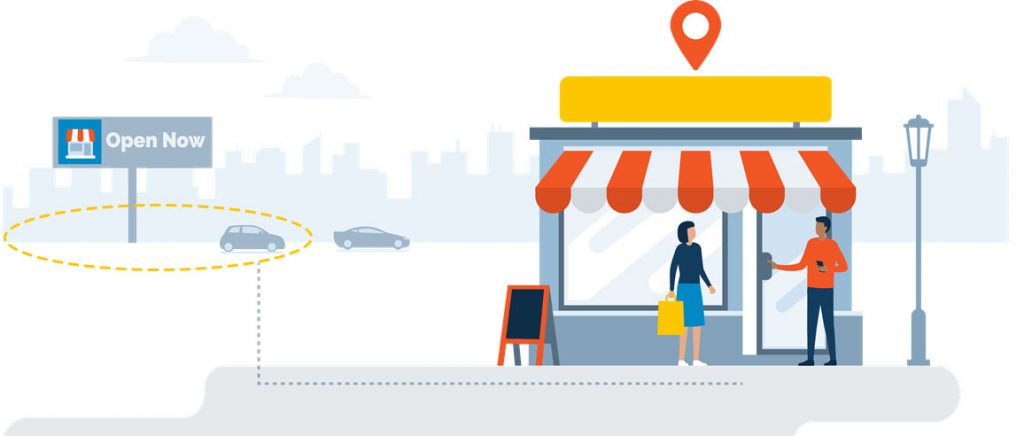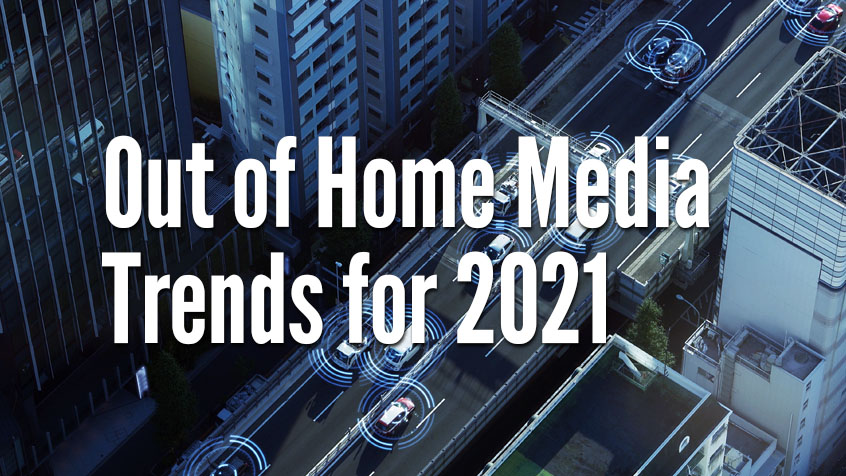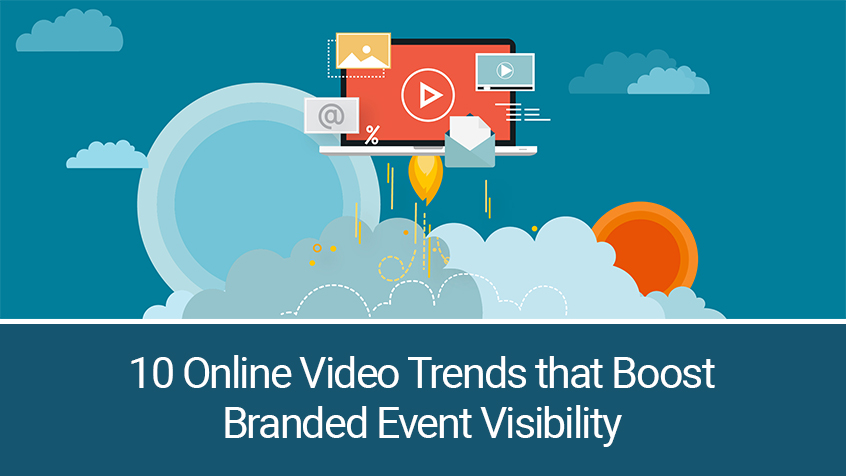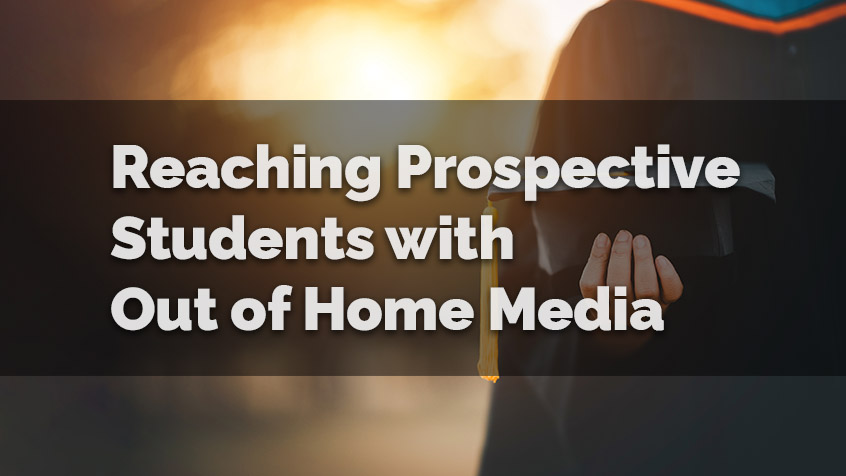It’s no secret that the Out of Home industry took a big hit in 2020. As lockdowns went into effect in March and April consumer traffic outside the home dried up almost overnight. Events were cancelled, trade shows went virtual and brands made major cuts to their advertising budgets with Out of Home largely turned off. Since then we have landed precariously in the oft-sited “new normal”. What this means in the long run we will have to wait and see, many of the changes to our lives will fade with their necessity, while others will hang in for the long run (curbside pickup please!) In the meantime, here are some Out of Home media trends we see influencing the industry as it rebuilds over the next year.
Out of Home Media Trends for 2021
As is often the case, adversity leads to innovation and times of great upheaval leads to great changes, and that has certainly been true for Out of Home this year. Geopath’s rapid development and deployment of their Impression Variation Dashboard to help everyone in Out of Home understand the changes in OOH viewership across the country has been a critical tool to help keep the industry on track. Both media companies and programmatic DSP’s have worked to make more inventory available and streamline the process.
The one overriding principle that will be a part of all of this, is the need for agility, speed and flexibility – from the ability to deploy campaigns in a couple days, to the flexibility to pause those campaigns when necessary (and without financial penalty) the speed with which we can update our understanding of mobility and traffic down to local levels, These developments were already part of the trajectory for Out of Home, but like so many other things were accelerated by the pandemic. And while they were emergency responses, they are likely to stay as it is difficult to take something of value away once it has been established.
So, here are our thoughts on Out of Home media trends for 2021. Like any “trends” article these days, this all comes with several large caveats: what will happen with the COVID pandemic? How quickly can vaccines roll out? How soon after that will the economy start to recover? How long will that take? While these and other open questions will certainly have an impact on timing and speed, they probably won’t affect the overall outlook for these trends continuing into the future and having a major impact on how Out of Home media is planned, bought and activated.
Programmatic Out of Home is Here for Real Now (Seriously):
For the past several years every Out of Home media trends article (ours included) was proclaiming that this would finally be the year that programmatic Out of Home took off, but by the beginning of 2020 that was starting to feel a little fatigued. Why hadn’t programmatic reached the levels we all expected when there were clear and compelling benefits? I think we all sighed a bit and maybe said to ourselves “oh, that again”. And then…
The old saying that necessity is the mother of invention has certainly proved itself this year. And while programmatic Out of Home certainly wasn’t “invented” as a direct result of Covid, the pandemic was certainly a driving factor in the acceleration of its adoption.

The fact is, programmatic served a number of very real, immediate needs for advertisers during the pandemic. The ability to activate campaigns with very short turnaround times, the flexibility to pause and restart as lockdown circumstances dictated, the ability to change out creative at the drop of a hat all provided advertisers with a level of speed and flexibility that played to the needs of the pandemic.
While 2020 saw advertisers finally getting wise to the format —mainly out of necessity— there is still some work to do on education and understanding. Most marketers will still need a crash course in how it works, and what to expect when running a campaign. The difference now is that many more marketers have been exposed and become aware of the practical benefits. The work of the OAAA’s newly formed working group to help develop cohesive standards and practices will be critical in shaping the future of the channel and is imperative to the future growth of Out of Home.
Out of Home Attribution Methods Will Help Set the Stage for Future Growth:
The Out of Home industry has long struggled with its inability to reliably measure and report the results of OOH campaigns. In the face of all the specific details that digital could provide, OOH was often relegated to the back burner because of its lack of measurement. That is no longer the case. With a variety of options available, including walk in studies, brand awareness and sentiment surveys, and offline to online studies there are measurement options to suit a wide range of campaigns and goals.
It’s important to remember that these methods are specifically geared toward measuring Out of Home, they are designed to work in an OOH environment and consider how the media works. It will be important for Out of Home specialists to remember this, and to understand how the models work, and be able to clearly lay it out for advertisers. Advertisers are used to the measurement systems for TV, radio and particularly digital and it is imperative that OOH planners are able to clearly articulate how OOH measurement systems work, what they can tell you, and what clients should expect.
The pandemic forced everyone to take a closer look at how their advertising budgets were performing and to be able to provide justification for every penny. While the severity of that trend may slacken as markets begin to rebound, it will not be going away anytime soon. The trend in Out of Home media will be to provide measurement systems that are specifically developed to measure OOH, and provide reliable, quantifiable results.

Out of Home Planning Data Will Continue Moving Closer To Real Time Measurement.
In recent years the measurement of Out of Home for planning purposes has made incredible strides. Geopath’s Insights launched in 2019 using mobile device data to provide levels of audience detail never before available for OOH planning.
When the pandemic hit lockdowns and shelter in place orders meant that OOH traffic virtually disappeared overnight and left the OOH industry struggling. In order to help the industry rebuild, and to provide advertisers with reliable data about the movement of audiences within a market Geopath launched their Mobility Dashboard. The dashboard, along with periodic reports allowed a near real time glimpse at what was happening with consumer traffic. It also helped to discern the changes in consumer travel patterns. People are moving around, just in different locations.
Fast forward to 2021 – having spent months with access to this new level of granularity and cadence of updates marketers will be reluctant to move back to annualized averages. You can’t put the genie back in the bottle. To be fair – the trend in Out of Home media has been heading this way for a while, the pandemic simply accelerated the timeline. 2021 will see the Out of Home continue to move in this direction – toward more granular measurements and more timely updates. Whether that will be quarterly, monthly or weekly remains to be seen, and will in part be based on the OOH industry’s ability to adapt to this new model. These changes will allow Out of Home to be measured more similarly to other media and will also support the continued adoption of programmatic OOH which will rely on more discreet planning data.
Hyperlocal Out of Home Campaigns Will Become More Common:
One effect of the pandemic on all of advertising was a shift in focus to more short-term promotional advertising. This is a natural consequence of companies that were doing anything to generate revenue in desperate times. For Out of Home this meant an increase in smaller, more targeted hyper-local campaigns. This served the dual purpose of allowing brands to apply their now limited budgets to areas that needed the most help, and to allow for differences in mobility in various markets.
While this was largely done out of necessity, it also revealed something. In the past OOH was limited in both targeting and speed to market, it was impractical and time consuming to conduct large numbers of small campaigns. With the advancements in audience location data, and the new speed available via programmatic it was now feasible to conduct these sorts of campaigns in a timely and cost effective manner.
The ability to apply this kind of smaller, localized, incremental pressure to help drive lower funnel activations is certainly desirable and valuable as part of a larger marketing mix. Expect that brands will continue to take advantage of this. Born out of the necessity of Covid hyperlocal campaigns will become a normal part of the OOH ecosystem.
The Return of Big Brand Awareness:

At the opposite end of the spectrum from hyper localization are the types of large scale, regional and national brand awareness campaigns that Out of Home has long been known for – and with good reason, they work. Much of the large-scale business of brand building was largely ignored through 2020 as brands cut back on spending and focused on just staying afloat. That means that, as we begin to return to some sort of normalcy they will have some ground to make up.
Reaching large audiences efficiently and a scale is one of the hallmarks of Out of Home, and as brands begin down the long road of rebuilding expect them to turn to OOH to support those efforts. The landscape for mass media has changed considerably due to the pandemic accelerating other trends. Traditional TV, once the standard bearer for mass media has taken a significant hit as more an more people turn to streaming services. A case could be made that Out of Home may be the last true mass media available.
Looking Forward:
If 2020 taught us anything, it was that adversity can drive opportunity to accelerate planned changes. There can be no other impetus that compels us to readily adopt what is already in the pipeline when it alleviates a gap in communication, commercialization, and collaboration. There are many takeaways from last year; focusing on where the momentum lies in 2021 is important as our industry remains agile and adaptable to the new normal.
Despite coming out of what may be the worst year in the industry’s history the outlook for Out of Home is bright. The advancements made in speed, flexibility, targeting and attribution have laid the groundwork for Out of Home to finally take its place alongside other media as a crucial piece of any media plan. We still have a long way to go – but at least the road is clear.





![OOH 101: A Comprehensive Introduction to Out of Home Media [Ebook]](https://www.emcoutdoor.com/blog/wp-content/uploads/2019/11/header_WIP2.jpg)